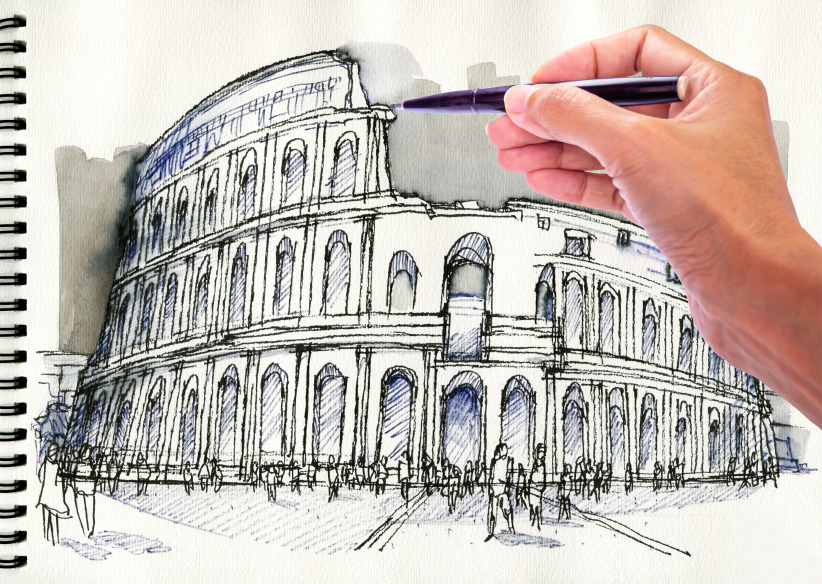

Every visitor to Italy is awed by the abundance of spectacular art that can be found in world-class cathedrals, galleries and throughout the streets of Rome. Much of this most impressive artwork dates back to the Renaissance, that period in Europe following the Middle Ages, from roughly the 14th to 16th centuries, when new scientific discoveries accompanied a flourishing of art, philosophy, and literature.
A growing interest in depicting nature during these times led artists to strive for more realism in their paintings. Translating our three-dimensional world onto the two-dimensional canvas demanded a new technique called "linear perspective," which used mathematical principles to create a compelling illusion of space and depth. This important innovation was developed gradually over centuries and continues to be a fascinating source of study for today's aspiring artists.
Learn the origins of perspective and how students at John Cabot University (JCU) apply this technique in their art classes in Italy.
Art School Students Learn about the Discovery of Perspective
To represent an enhanced dimension of realism in their work, Renaissance artists performed careful observations of nature, including studying anatomical dissections and exploring the effects of light. Experiments with integrating perspective to achieve an accurate depiction of depth became more successful after Filippo Brunelleschi, a famous Italian architect and engineer, developed a specific methodology based on precise calculations.
Around 1420, Brunelleschi suggested a system that used a central vanishing point on the horizon line where intersecting lines sketched over the image would converge and disappear. This linear perspective explained how objects get smaller with increasing distance from the observer's eye. Brunelleschi would use his understanding of perspective to show his architectural clients how a building would look after it was built.

How Perspective was Developed by Artists
The concept of the central vanishing point seems to have first been used accurately for purely artistic purposes in 1423 by Masolino da Panicale, who painted elaborate group scenes of St. Peter's miracles with remarkable skill. The painter Masaccio applied a similarly complex geometric framework four years later to create his influential fresco, The Holy Trinity. In his painting, the spatial dimension of the architecture is so realistic that students viewing it in art classes in Italy today might feel like the wall behind the canvas has opened up.
Architect and author Leon Battista Alberti published a widely read treatise on the subject in 1435, revealing what Brunelleschi and others had already been practicing. Following these breakthroughs, nearly all Renaissance artists began enhancing their work with perspective. By 1500, Raphael and Leonardo da Vinci were creating masterpieces representing the culmination of a century of perspective exploration.

Using Perspective in Art School in Rome Today
Today's students at art school in Rome can follow in the steps of these innovators to apply perspective in their own creations. To imagine the picture surface as an "open window" through which to view the painted world, Leonardo would sometimes begin a painting by drawing all the lines necessary for creating perspective before sketching in all the figures. Other artists would play with perspective to make a statement, such as intentionally placing the vanishing point on the Virgin Mary's womb to draw the viewer's attention.
More modern artists like Picasso redefined perspective by breaking up the picture plane to divide forms into geometric pieces. Emerging computer technologies have brought exciting advances in this realm, such as the perfect grids used in video games or unique spatial alignments demonstrated in graphics software programs.

In the Studio Art Program, JCU students are challenged to combine diverse art forms to expand their creative horizons. Classes visit important examples of perspective and other techniques within walking distance of the campus in Rome and develop their artwork at JCU's state-of-the-art facilities. The student art exhibition at the end of each semester is a rewarding opportunity to show off these creations.
Would you like to take art classes when you study abroad?
Explore the Studio Art courses at John Cabot University in Rome.




